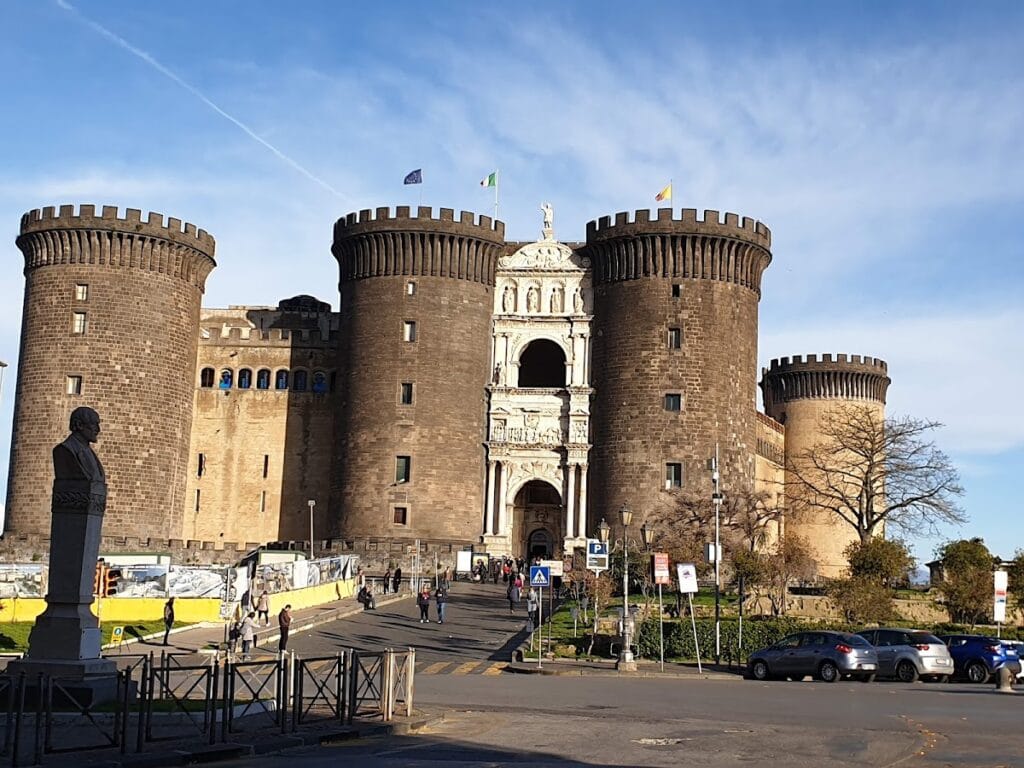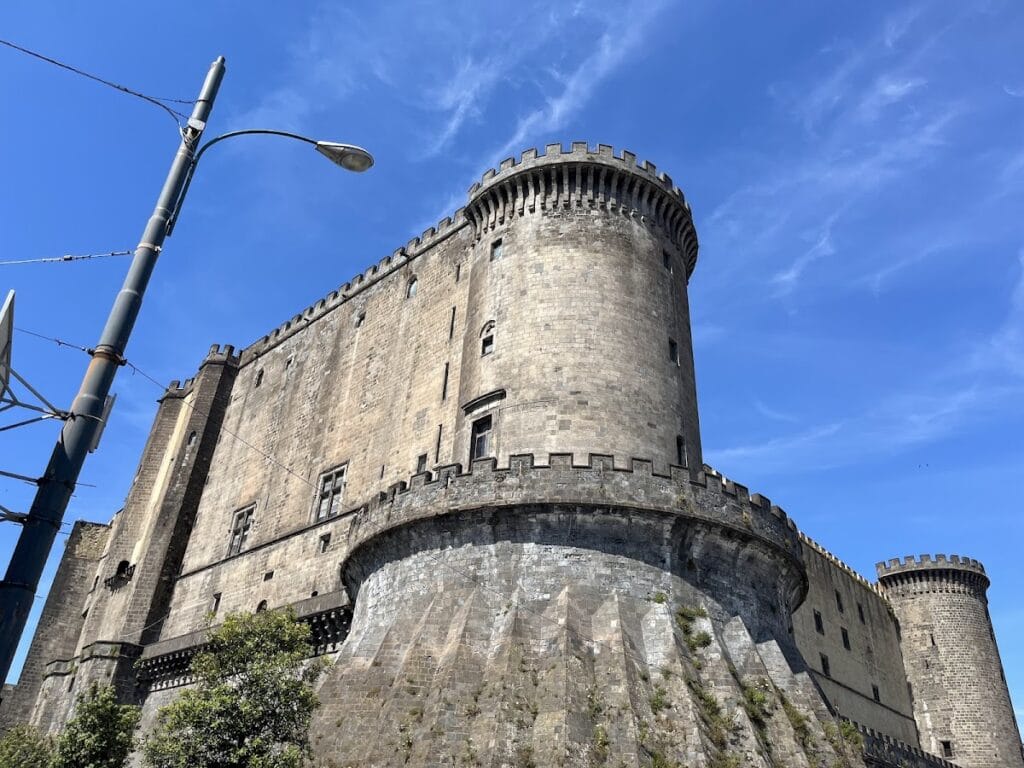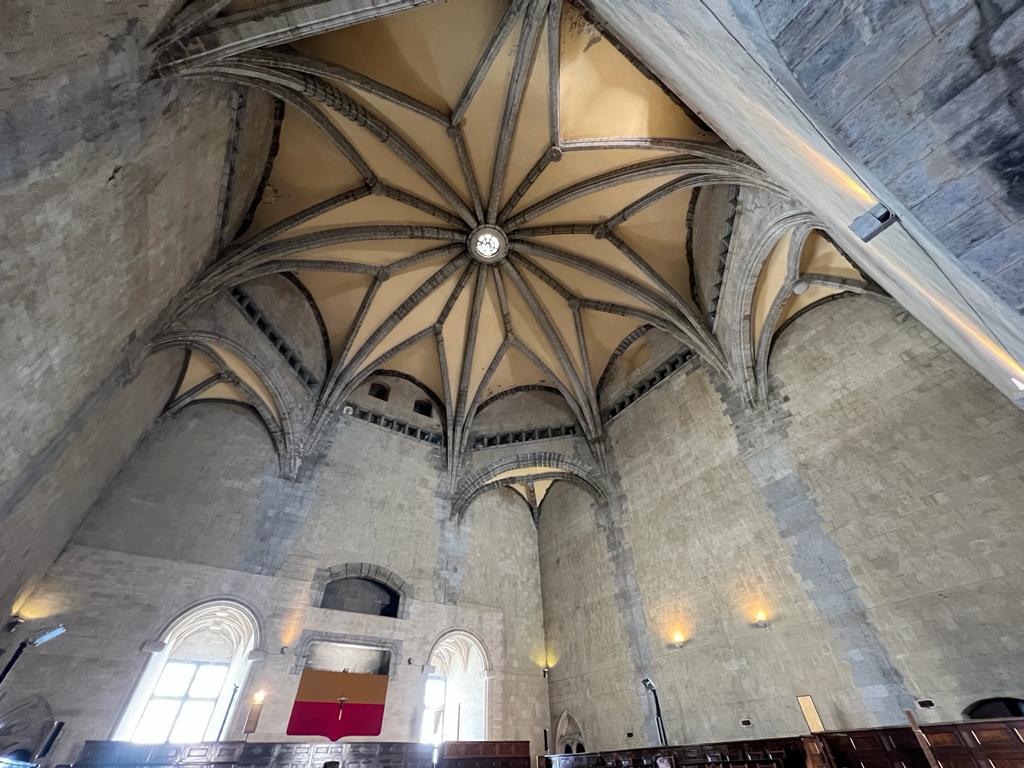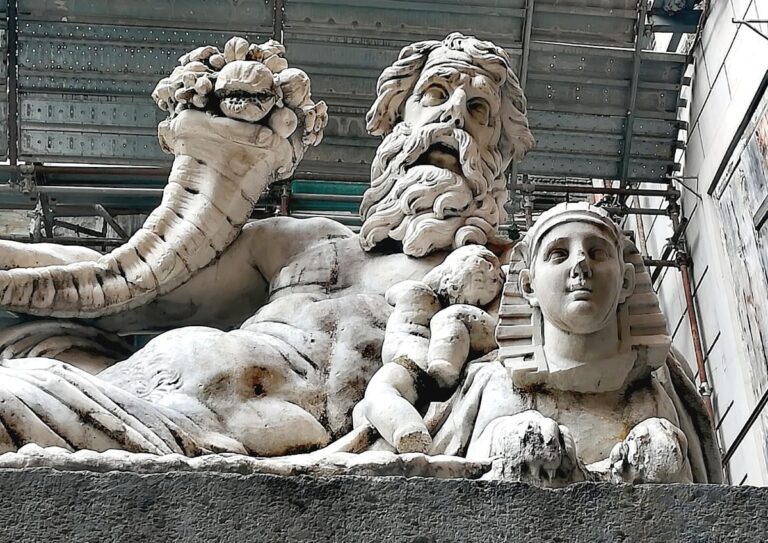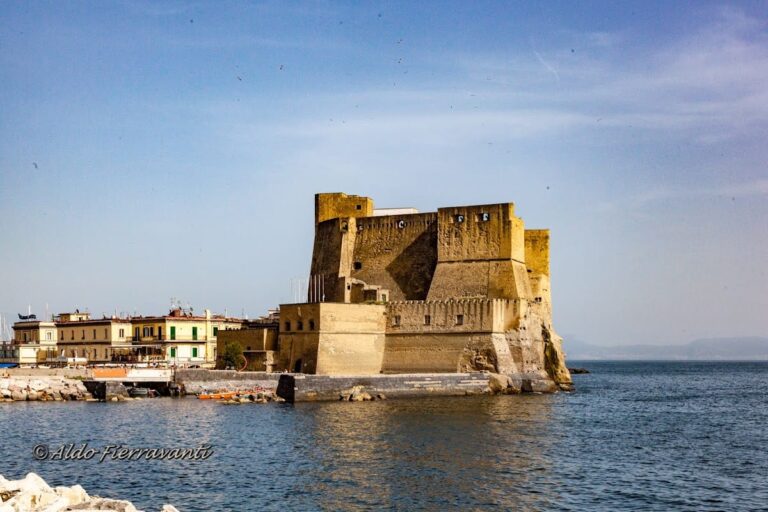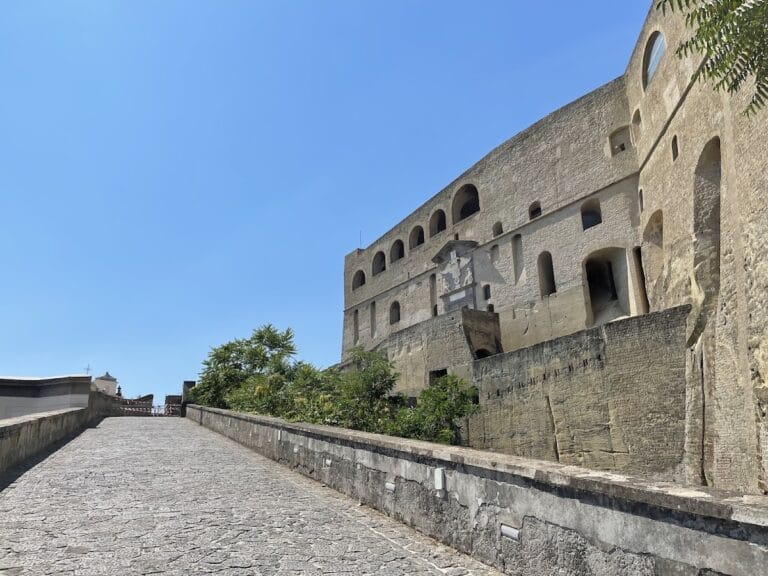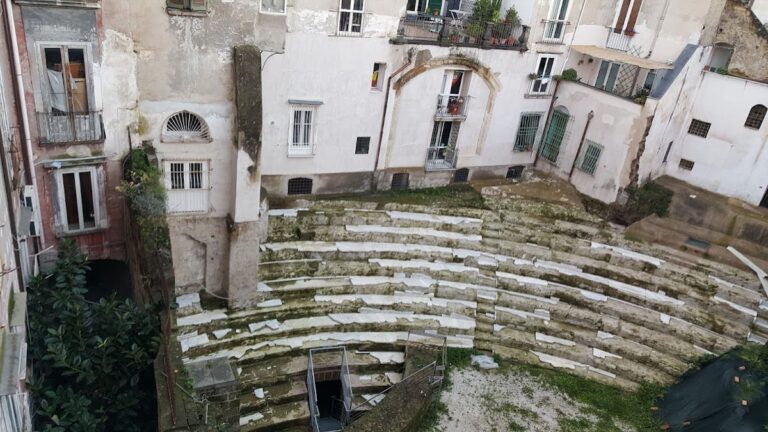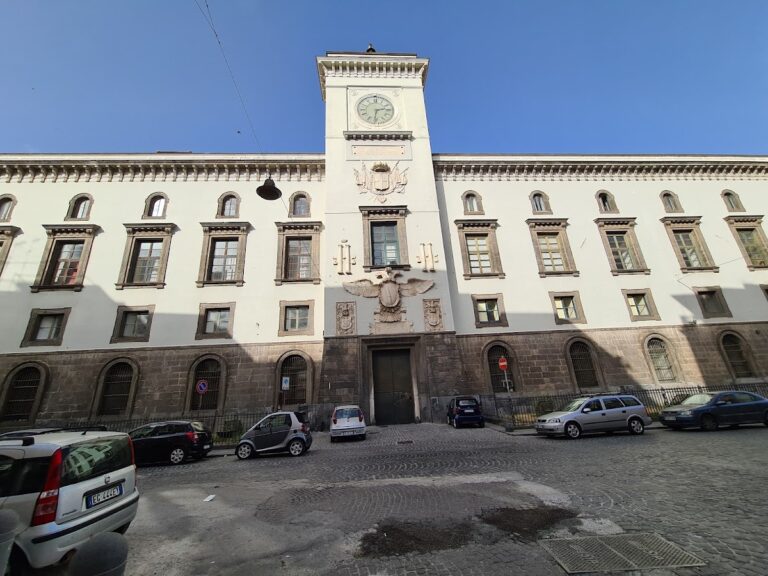Castel Nuovo: A Historic Fortress and Cultural Landmark in Naples
Visitor Information
Google Rating: 4.4
Popularity: Very High
Google Maps: View on Google Maps
Official Website: www.comune.napoli.it
Country: Italy
Civilization: Medieval European
Remains: Military
History
Castel Nuovo, also known as Maschio Angioino, stands in Naples, Italy. This fortress was commissioned by Charles I of Anjou, a ruler of the Angevin dynasty, beginning in 1279. Its construction aimed to replace the older Norman stronghold, Castel Capuano, reflecting the shift of the Sicilian capital from Palermo to Naples after Charles I’s conquest in 1266.
By 1282, the castle was ready to serve as the royal palace and seat of Angevin power. It quickly became a notable political and religious center. In 1294, its main hall witnessed the rare and remarkable events of Pope Celestine V’s abdication and the election of Pope Boniface VIII. These moments marked the castle as a place of critical historical significance beyond its military role.
During the reign of King Robert the Wise, from 1309 to 1343, Castel Nuovo evolved into a vibrant cultural hub. It attracted prominent figures such as the poets Petrarch and Boccaccio, alongside artists like Giotto. Around 1330, Giotto frescoed important interiors including the Palatine Chapel and the Hall of the Barons, enriching the castle’s artistic heritage.
The mid-14th century saw Queen Joanna I residing in the castle until her escape in 1347. Soon after, King Louis I of Hungary attacked and partially damaged the fortress. Successive rulers—Charles III, Louis II of Anjou, and Ladislaus I—continued to use Castel Nuovo as their residence into the early 1400s, maintaining its importance in Neapolitan governance.
A significant transformation occurred under Alfonso V of Aragon, who captured Naples in 1443. Between 1453 and 1479, the castle underwent extensive remodeling in the Gothic-Catalan style under architect Guillem Sagrera. The original Angevin square towers gave way to five imposing round towers, and the castle’s entrance was enhanced with a Renaissance triumphal arch celebrating Alfonso’s arrival.
In 1487, the Hall of the Barons became the venue for a failed conspiracy against King Ferdinand I of Aragon, leading to the arrest and execution of the conspirators within the castle walls. The fortress’s fortunes shifted again in 1494 when Charles VIII of France sacked it during the Italian Wars.
After Naples came under Spanish rule in 1503, Castel Nuovo was repurposed as a military garrison and prison. This function led to the loss and damage of many of its Gothic and Renaissance artistic features. Under Bourbon rule from 1734, Charles of Bourbon initiated renovations, notably replacing an eastern facade with a large barracks block. Despite these updates, the castle ceased to operate as a royal residence, with newer palaces taking precedence.
The 19th and 20th centuries brought a decline in the castle’s condition, as industrialization nearby obscured parts of the structure. From the 1920s onwards, several restoration campaigns aimed to recover its 15th-century character. These efforts have continued into the 21st century, with significant investments devoted to preserving the castle and addressing structural issues.
Remains
Castel Nuovo presents an irregular trapezoidal layout, encircled by a moat and fortified by five large round towers. Three towers—San Giorgio, Mezzo, and Guardia—guard the landward side, while the Oro and Beverello towers face the sea. Four of these towers are clad in piperno, a volcanic stone common in Naples, with one tower faced in tuff, a softer volcanic rock. Each tower is topped with battlements supported by corbels and contains a cylindrical spiral staircase, known as the “Catalan staircase,” historically providing access to rooftop watch posts.
The castle’s main gateway is distinguished by a monumental marble triumphal arch constructed from 1452 to 1471 in honor of Alfonso V of Aragon’s conquest of Naples. This elaborate entrance features two stacked arches framed by ornamental Corinthian and Ionic columns. The arch is adorned with relief panels illustrating Alfonso’s victorious procession, niches housing statues representing the four cardinal virtues, depictions of rivers, and a statue of Saint Michael positioned at its apex. The work of notable sculptors such as Guillem Sagrera, Domenico Gagini, Isaia da Pisa, and Francesco Laurana contributed to this richly decorated portal.
Facing the sea stands the Palatine Chapel, the sole surviving element from the original Angevin construction of the 14th century. Its Renaissance portal is embellished with reliefs crafted by Andrea dell’Aquila and Francesco Laurana, while the rose window was redesigned during the Aragonese period by Matteo Forcimanya. The chapel’s interior once featured frescoes by Giotto dating from around 1330, depicting scenes from both the Old and New Testament, though much of this decoration has been lost. The chapel also contains sculptures regarded as examples of the Neapolitan Renaissance artistic style.
The Hall of the Barons, originally the throne room, measures roughly 26 by 28 meters and is covered by an eight-sided umbrella vault with pointed lunettes and a central opening, or oculus. Small windows allowed guards to discreetly observe the king during formal audiences. The floor was tiled with white and blue glazed majolica imported from Valencia, reflecting the period’s artistic exchanges. Inside the hall is a large fireplace flanked by two galleries designed for musicians and decorative elements including a double-sided marble portal by Domenico Gagini. Reliefs on the walls recall Alfonso V’s triumphant arrival at the castle.
Adjacent to the Palatine Chapel on a lower level is the Armory Hall, notable for revealing important Roman archaeological remains during restoration. These remains date from the 1st and 5th centuries BCE and are preserved beneath a transparent glass floor, allowing visitors to view ancient foundations directly within the medieval structure.
The Chapel of the Souls in Purgatory was added in the late 16th century by Spanish viceroys. It features Baroque decoration with frescoes and gilded stucco framing. This chapel was used to administer sacraments to prisoners condemned to death and contains an altar painting of the Madonna del Carmine surrounded by souls in Purgatory.
The 15th-century Chapel of Saint Francis of Paola, accessible through the Hall of Charles V, underwent Baroque restoration and was consecrated in 1688. Its original vault, designed by Guillem Sagrera, suffered destruction during World War II bombing raids.
Within the castle’s dungeons lie two notable pits. The “Crocodile Pit” functioned originally as a grain storage area and later as a prison chamber, becoming the subject of a legend about a crocodile that was said to have devoured prisoners. The “Barons’ Pit,” nearby, contains four anonymous coffins believed to hold the remains of nobles implicated in the 1487 conspiracy against King Ferdinand I.
The castle complex also includes an inner courtyard, a bridge, and an atrium adorned with frescoes. A bronze entrance door, crafted by the monk Guillem of Naples, depicts scenes of Alfonso’s military victories. Various loggias and staircases connect different parts of the fortress.
Today, Castel Nuovo houses the Civic Museum, whose collections span from the 15th to the 20th century and include works by followers of Caravaggio and Neapolitan Baroque artists. It also contains the library of the Neapolitan Society of Homeland History, which holds rare early printed books.
Restoration campaigns during the 20th century removed many additions from later periods, revealing medieval windows and battlements and uncovering walls and the surrounding moat as they appeared in the 15th century. Some roofs were not restored and instead replaced with modern coverings. Ongoing preservation challenges mean that portions of the castle remain closed to the public for safety reasons.
